Commentary 16 Apr 2011 06:54 am
More about Sidney
- I don’t really feel as though I’d hit the mark in my post about Sidney Lumet. The man made such an impact on my life. I wrote about the different films that I worked on for him, but don’t feel as though I really said much about him. A lot of thoughts and memories have gone through my head in the last couple of days since that post. I thought with this one, I’d give some disconnected memories of things that happened or were spoken during the process of making titles.
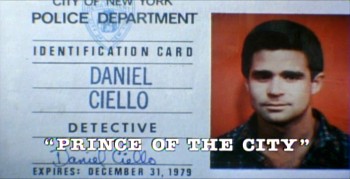 There was always an initial screening of the rough cut in a small screening room. People generally seem to sit two seats away from each other. Unless you came with someone, you didn’t sit next to anyone. At the Prince of the City screening there were no titles on or during the film, no music, and lots of markings on the print. It felt exciting. I came with Phillip Schopper, who I was bringing onto the project, and we sat alongside each other. Silent. When we met with Sidney immediately after, he told us the major problem he had with the film, and it was the one I’d seen: the film was confusing, at that time. You couldn’t ID many of the characters and you didn’t remember which side they were on – good or bad. Sidney asked for us to do IDs throughout the film. We did something pathetically simple in making the good guys color and the bad guys B&W, but it wasn’t obvious. I have to say that our work really tied the film together and made the characters more clear.
There was always an initial screening of the rough cut in a small screening room. People generally seem to sit two seats away from each other. Unless you came with someone, you didn’t sit next to anyone. At the Prince of the City screening there were no titles on or during the film, no music, and lots of markings on the print. It felt exciting. I came with Phillip Schopper, who I was bringing onto the project, and we sat alongside each other. Silent. When we met with Sidney immediately after, he told us the major problem he had with the film, and it was the one I’d seen: the film was confusing, at that time. You couldn’t ID many of the characters and you didn’t remember which side they were on – good or bad. Sidney asked for us to do IDs throughout the film. We did something pathetically simple in making the good guys color and the bad guys B&W, but it wasn’t obvious. I have to say that our work really tied the film together and made the characters more clear.
The initial screening for Garbo Talks was a bit more peculiar. I sat down and a woman sat next to me; I sort of recognized her. We said hello when she sat down. Somewhere midway during the film I realized who the woman was – Betty Comden, that half of the Comden & Green writing team. I realized she was playing the part of the older Greta Garbo in the film. It was brilliant casting, but you could say that about all of Sidney’s movies.
When I left the screening room there was a tense meeting going on with four people. I caught Sidney’s eye and waved goodbye. Going down in the elevator Burtt Harris, the producer, rushed in as the doors were closing. He asked what I thought of the film. Before I answered he said it wasn’t working, and Elliott Kastner and MGM weren’t very happy. A rough conversation in an elevator.
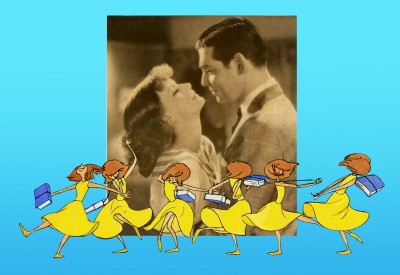
The next day, Sidney asked what I thought of the film, I said that I felt we didn’t know enough of the back story of the Ann Bancroft character in the film. I suggested that I try to offer this in the opening credit sequence. Sidney loved the idea. He just made me promise that it wouldn’t feel like the credits to “I Love Lucy” or “I Dream of Jeannie.”
During the mix, we were talking about the music for Garbo Talks when we slipped off into discussing the music for some of Sidney’s other films. I told him that the music by Richard Rodney Bennet for Murder on the Orient Express was one of the most brilliant film scores ever done. Sidney hesitated in responding finally saying he didn’t get it at first, and it took a while for him to appreciate the music for that film. Sidney wasn’t always perfect in selecting a composer for his films, although I do think that Johnny Mandel was a great choice for him on Deathtrap and The Verdict (or any film, actually).
Bob James had scored Garbo Talks. (He is an eminent jazz pianist, whose most famous piece is probably the theme to the tv show, Taxi.) Bob and I had to work together very closely. He wrote the score to the animatic I’d given him and would build the rest of the film’s score from that. He hit many of the actions in that opening title, and Tissa David‘s animation hit them all. There was a very tight sync between music and title animation.
The preview screening was held on Long Island. I drove there and met the group of Sidney, editors and MGM execs, including Elliott Kastner. He was the leading producer on the film. They weren’t happy at the end of the screening, and I was sure my titles were going to go. It took a week to hear that the titles were staying, but the score by Bob James was dropped. The composer took the hit, unfairly. A new score was being written by Cy Coleman. All that tight sync work!
Coleman wrote a lovely melody for the film, but just swept across the animation not hitting any points in particular. It’s taken me a long time, but I’ve come to like the music he wrote. Tissa still won’t watch it with the newer music.
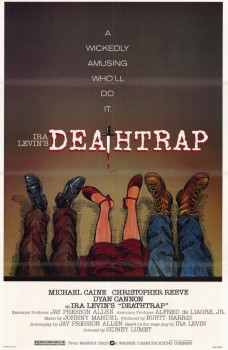 Before Deathtrap, Sidney phoned me to say that his daughter, Jenny, and her boyfriend were free for the summer and both were artistically inclined. He wondered if there were anything I could offer them in the way of a summer job. Basically, I was being offered their services in exchange for the next title job. This was the real movie business, one hand washes the other. Why not?
Before Deathtrap, Sidney phoned me to say that his daughter, Jenny, and her boyfriend were free for the summer and both were artistically inclined. He wondered if there were anything I could offer them in the way of a summer job. Basically, I was being offered their services in exchange for the next title job. This was the real movie business, one hand washes the other. Why not?
I did have work and could keep them busy in my studio. It turned out to be an entertaining summer (more for my production supervisor at the time, Steve Parton, than it was for me). Jenny and friend both did a good job for the work they were given. I had fun with Deathtrap. Jenny went on to writing screenplays earning lots of awards for her first film, Rachel Getting Married.
I remember, one day, walking a couple of city blocks with Sidney. He told me he’d just seen the recent Indiana Jones movie. He commented that he didn’t think there was a scene longer than 3 seconds and felt that something seriously bad was happening to movies. He was on his way to see a rough cut of Wall Street and was curious to see what Oliver Stone had done but said it was a tough subject.
There was another time when Sidney couldn’t leave the editing room. He was waiting for a call from Barbra Streisand. She was about to direct her first film, Yentl, and she wanted advice from Sidney. During my meeting with him, the call came through, and I scheduled another time. Afterwards he told me that she’ll do a great job; she did.
Sidney was great to work with. He had this interesting way of telling me exactly how many frames (3 or 5 or some such number) he wanted something on the screen. This happened quite a few times. I didn’t follow what he said, exactly, but I knew from the conversation just what he was looking for; he made it easy for me to give it.
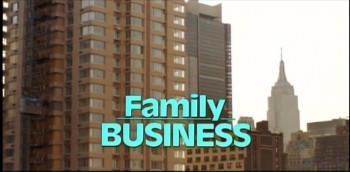 I was always curious about Sidney’s work with editors. It seemed that they worked with him for one or two films and then he quickly moved to someone else. Oftentimes, an Assistant Editor on one film would graduate to the Editor on the next. I found it curious on one movie to be working with John Fitzsimmons editing, and on the next film it was Andrew Mondshein. Andy continued on through another couple of films, and John Fitzsimmons came back to be his Sound Editor.
I was always curious about Sidney’s work with editors. It seemed that they worked with him for one or two films and then he quickly moved to someone else. Oftentimes, an Assistant Editor on one film would graduate to the Editor on the next. I found it curious on one movie to be working with John Fitzsimmons editing, and on the next film it was Andrew Mondshein. Andy continued on through another couple of films, and John Fitzsimmons came back to be his Sound Editor.
The last job we did together was Family Business. I was asked to work with the Greenbergs who were doing all the effects, and Sidney also wanted them to do the opticals for the credits. Fine. But there were problems, and the job was done over many times. The Greenbergs were the most expensive optical house in NY at the time. I got my fee, and they got theirs. Needless to say, they made more money than I.
When it came time for the titles for the next film I received a call from an editor I didn’t know (Richard Cirincione). He said that Sidney asked me to do the titles for the new film, Q & A, but it had to be less expensive. I agreed and said that if they’d allow me to do my opticals at a house of my choosing I could keep the costs down, otherwise I had no control. 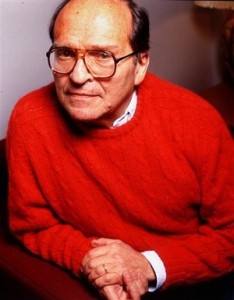 (I had done this with Running on Empty and brought the titles in for a very low budget. They were also beautifully handled.) I made sure the editor understood that I certainly wanted to do the film, even if it was only a break-even job for me.
(I had done this with Running on Empty and brought the titles in for a very low budget. They were also beautifully handled.) I made sure the editor understood that I certainly wanted to do the film, even if it was only a break-even job for me.
I didn’t hear from the editor again. I’m sure I was caught up in some inner political thing. I knew it was going to happen.
The last time I met Sidney was at an Academy salute to the brilliant editor Dede Allen. There were a number of greats there, Sidney, Tony Walton and Arthur Penn among them. Sidney first saw me in the lavatory where he gave me a big hello. We talked a bit on leaving and entering the party, but nothing special was said. It was just nice to be remembered and greeted so well. I miss that relationship, and I’ll miss Sidney.
.
A.O. Scott in the NYTimes wrote a fine piece about the urgency of Sidney’s films.

on 16 Apr 2011 at 12:02 pm 1.Mark said …
Garbo Talks is one of the most enjoyable Lumet films most people have never seen. I’ve loved it and the credits since it first hit the screen!
on 16 Apr 2011 at 12:06 pm 2.Michael said …
Thanks, Mark. I do agree with you. It isn’t a great movie, but it is well undervalued. It hasn’t been released in DVD to date.
on 16 Apr 2011 at 12:49 pm 3.Rogelio said …
Garbo Talks is on DVD. It came out on a MGM DVD-R Burned Edition about a year ago. I think it’s only available through Amazon.
on 17 Apr 2011 at 3:00 pm 4.David Nethery said …
Garbo Talks is currently streaming on Netflix .